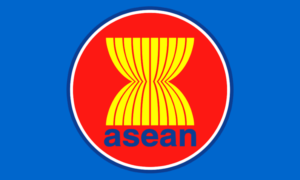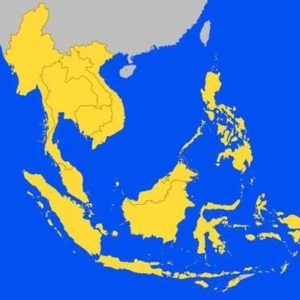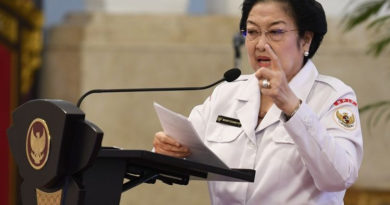ASEANEWS-COMPANIES | The rapidly evolving ASEAN consumer
Living history: Tourists visit Prambanan Temple in Sleman, Yogyakarta, on Jan. 2, 2025. The Tourism Ministry has set a target of 16 million foreign arrivals this year as the government seeks support from travel and hospitality businesses with more international flights to boost tourist arrivals. (Antara Foto/Hendra Nurdiyansyah)
ASEAN consumers have always been at the forefront of digital adoption, and it is well apparent through their increased utilization of digital banking and demand for personalized services and solutions.
.

A SEAN is a region on the rise, with expanding domestic demand, strong foreign direct investment (FDI) and a robust tourism industry. Combined regional gross domestic product (GDP) doubled between 2009 and 2022 to reach US$3.6 trillion. At the heart of that growth is the rapidly evolving ASEAN consumer. Growth in the ASEAN-6 countries of Indonesia, Malaysia, the Philippines, Singapore, Thailand and Vietnam averaged 3.8 percent in 2023, rising to 4.5 percent in the first half of 2024. This compares favorably to major economies, which grew at an average 3.1 percent and 3.2 percent over the respective timeframes. ASEAN’s story is one of continued consumption. Two trends are set to shape the future of that consumption — an optimistic but economically aware consumer, and one which is increasingly resilient and open to customer-centric products and services — a situation laid out in detail in the ASEAN Consumer Sentiment Study 2024, developed in partnership between Boston Consulting Group (BCG) and United Overseas Bank (UOB). So, what does this mean for Indonesia and its consumers? Our findings demonstrate an intriguingly pragmatic optimism across the region. What’s also clear, however, is more work is needed to unlock the full potential of this expanding consumer base. Indonesia is the largest contributor to ASEAN GDP and boasts the second largest foreign direct investment (FDI) in the region. More than two thirds (70 percent) of the population are under 45 years of age. By any measure, this is a nation of huge consumer potential. Consumer considerations in current economic conditions Indonesian consumers are carefully navigating the complex economic landscape, but are demonstrating resilient positivity when it comes to their economic future.
.
Indonesians are the region’s most optimistic consumers, alongside the Vietnamese, displaying a joint 84 percent in net positive emotions.
|
|
.
Yet, it is worth noting that while more than half of consumers are happy about the current and future economic situation, this optimistic sentiment is weaker compared with last year. Just over half (55 percent) of Indonesians are happy with the current situation, which is down 13 percentage points from 2023. The higher inflationary environment during the period of our 2024 study is likely to have influenced this sentiment to some degree, with year-on-year (yoy) inflation reaching 3.05 percent as of March 2024. The optimism of consumers is reflected through a resurgence in the “experiential” spending categories such as entertainment (e.g., concerts/events/festivals), lifestyle (e.g., spa/massage) and leisure travel, alongside dining out. Experiential spending has increased for more than a quarter of Indonesian consumers (27 percent), with Gen Z (33 percent) and Gen Y (30 percent) leading the pack. This confidence in discretionary spending is likely to stem from a growing sense of financial security. Indonesian consumers are extremely optimistic in this regard, with 89 percent expecting to have similar or improved finances next year. Notable positive changes in other areas, including consumers being less concerned about work-related challenges and health and well-being now than previously, could also have fueled this higher spending behavior. The overall optimism indicates the readiness of consumers to bounce back after the long spell of macro-challenges and their thirst to enjoy products and experiences catering to their aspirations and not just their needs. Rising intra-regional travel driving cross-border spending and alternative methods of payments Tourism is one important area where this optimistic sentiment reflects strongly. High intra-regional travel within ASEAN has contributed to strong cross-border spending. Two thirds of ASEAN consumers have spent overseas within ASEAN in the past year, with Indonesia (60 percent) broadly in line with this trend. More frequent traveling may also have catalyzed the shift in payment preferences, as consumers lean toward alternative payment methods with higher convenience. Two thirds (63 percent) of Indonesian respondents prefer paying by physical or mobile credit/debit cards when travelling abroad, compared to just under half (49 percent) for cash and roughly a third (38 percent) with scan-to-pay or peer-to-peer payment solutions. Growth of digital banking ASEAN consumers have always been at the forefront of digital adoption, and it is well apparent through their increased utilization of digital banking and demand for personalized services and solutions. Online is now the preferred channel for many for various activities including performing overseas funds transfers and gathering information about new products. Having said that, a third of Indonesians still prefer omni-channels for high monetary value transactions, fraud reporting and seeking financial and investment advice; activities which are seemingly more complex and require higher levels of trust and support. This underlines the importance for banking and financial institutions continuing on the path of a hybrid channel strategy. On personalized products and services, Indonesian expectations are growing, with a substantial 84 percent of consumers preferring personalized offers. Almost two thirds (65 percent) prefer these to be delivered via mobile apps, and 75 percent preferring them through email. This presents a clear opportunity for businesses to tailor products and solutions catering to the specific needs of different segments, going beyond traditional segmentation and venturing into hyper-personalization. For instance, UOB successfully deployed hyper-personalization at scale through its UOB TMRW mobile app, serving more than 129 million AI-driven nudges to 3.6 million of its regional customers. The impact is striking with more than one in three customers having interacted with the insights, and customers who are digitally engaged have 100 percent higher current/savings account balances and 50 percent higher average card spending. Serving an evolving Indonesian consumer In sum, despite the challenges in the prevailing complex economic landscape, Indonesian consumers continue to evolve, more rapidly now than ever before. It is therefore imperative for businesses to fill gaps in how they serve the changing behavior and preferences of consumers to stay in the game. Key trends which have shown a strong and resilient trajectory in the last couple of years include the higher propensity to acquire unique experiences, accelerated digital adoption and usage in various lifestyle aspects and the desire to be served differently from others. These trends present opportunities to catapult companies, allowing them to emerge as leaders of the future by identifying unsaturated demand areas and to serve with personalized solutions, leveraging a balanced and well thought through use of hybrid-channels. With these elements in place, businesses will be positioned to serve the needs of evolving Indonesian consumers in this huge and expanding consumer base at the heart of a dynamic region of growth.
Click to read: https://www.thejakartapost.com/business/2025/02/11/the-rapidly-evolving-asean-consumer.html.
***
Aditi Bathia is Southeast Asia consumer insights specialist at BCG; Bea Teh Tan is consumer banking director at UOB Indonesia.
.
|
|
.
Aditi Bathia and Bea Teh Tan ”
The Jakarta Post
Tue, February 11, 2025




 Memento Maxima Digital Marketing
Memento Maxima Digital Marketing






